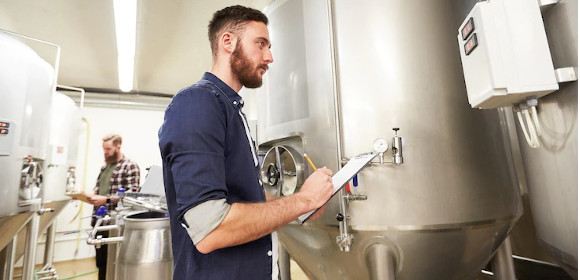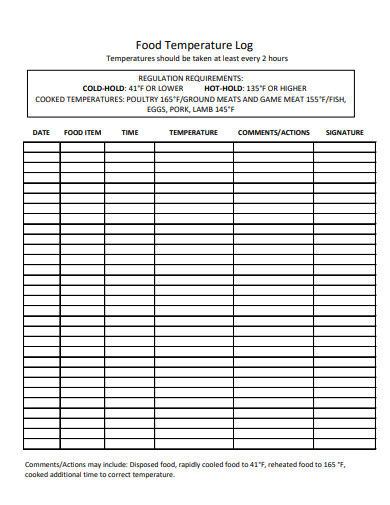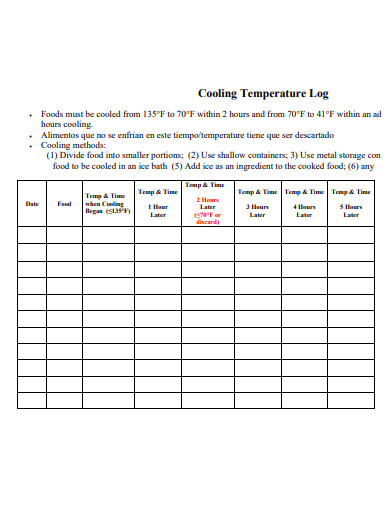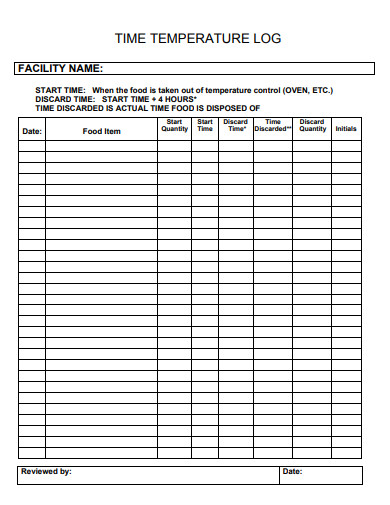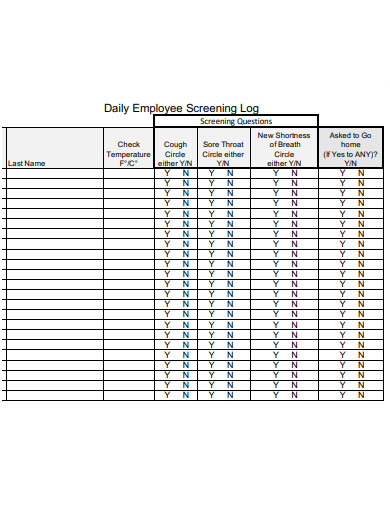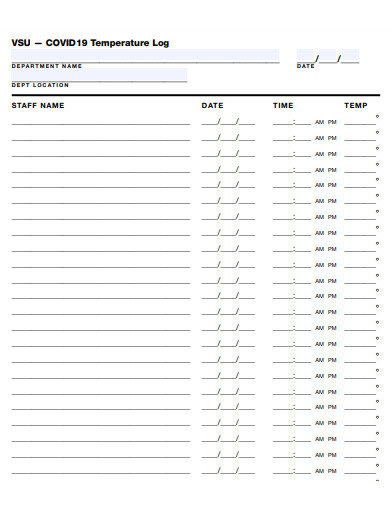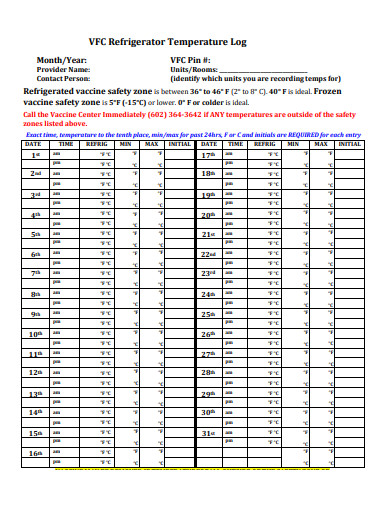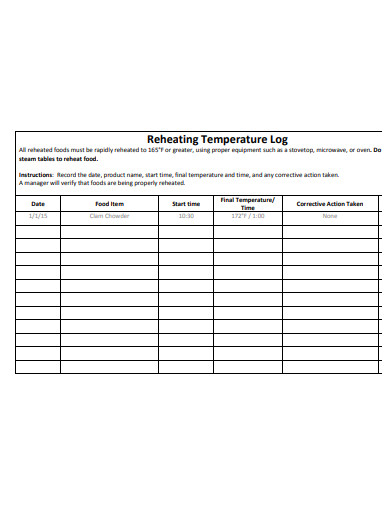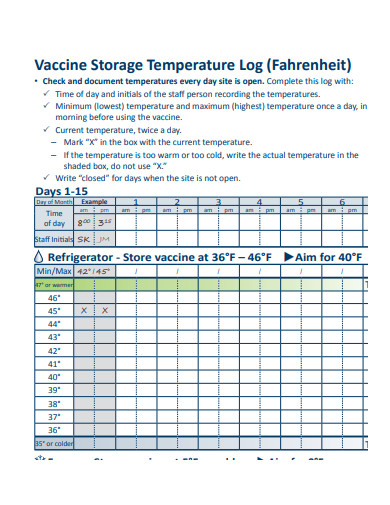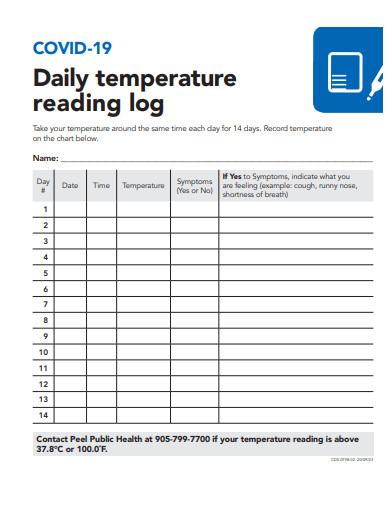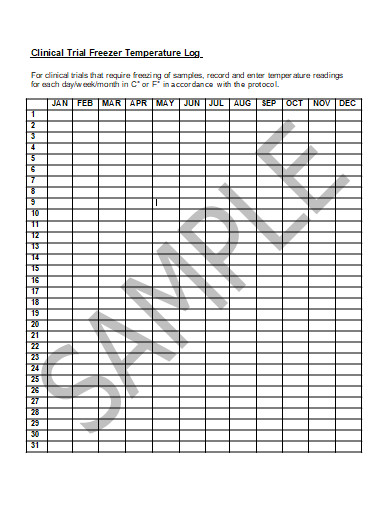Temperature logging has been an integral part of many industries. Whether it’s for a fast-food business, return to work policy, COVID-19 monitoring, and many others requiring employee safety and school safety. Foods in the business industry need a temperature log for the daily food inventory of their frozen goods. While others tried to maintain a health and safety plan by using such a log. Hence, keeping accurate temperature records is essential for any management system. In other words, if you have monitored temperatures, you can more easily safeguard yourself against allegations of unsafe daily status.
10+ Temperature Log Samples
1. Food Temperature Log
2. Cooling Temperature Log
3. Time Temperature Log
4. Hot Water Temperature Log
5. Daily Employee Temperature Log
6. COVID-19 Temperature Log
7. Refrigerator Temperature Log
8. Reheating Temperature Log
9. Vaccine Storage Temperature Log
10. Daily Temperature Reading Log
11. Clinical Trial Freezer Temperature Log
What Is a Temperature Log?
A temperature log is a vital document that can be used as a tool for a daily activity report for food delivery or workplace safety. In which data about temperatures are maintained. The log usually contains temperature readings taken at set intervals over a given period. Aside from that, logging is used in several different contexts, ranging from meteorology to fertility treatment. Many utilities are available to make it very easy to set up and maintain a temperature log.
How to Make a Temperature Log
Crafting and monitoring temperature logs can be pretty challenging. However, it’s essential to invest your time and effort in creating a log for the monitoring system of critical control points in temperature. A well-made temperature log allows you to identify deviations away from the target levels. Additionally, temperature errors can be easily identified and fixed to ensure safety. So, we highly recommend you follow the steps below to create a professionally-made temperature log.
1. Draft the Necessary Information for Your Log
Before heading out to create a final log, you need to sit and analyze the data you want to include. Remember that a standard temperature log contains space in each entry to record the temperature, the time the temperature was taken, the date, and any remarks which may be applicable. The log also includes space for a note to indicate who took the temperature and the type of equipment used for the reading.
2. Create a Specific Log
There can be various purposes for using a temperature log. Once you’ve drafted out the information from the previous step, you may now identify the purpose of your temperature log. This is important so you can be guided on the format and layout of your entire log.
3. Add Sections in Your Log
In this case, you may now create a tabular section to organize your log content. You may set a section for the temperature measurement. Make sure to substitute between the probe and the temperature gauge and periodically check the temperature using both to report for cases where either piece of equipment may be faulty—next, the date and time. Then, the name or initials of the temperature checker, who has the proper training and knows how to take readings properly.
4. Include an Appropriate Heading
It is also advisable to include the proper headings to represent the key concept of your temperature log. To know what it is for and to convey the level of its importance visually. Make sure to make your headings look bigger with legible fonts.
FAQs
Why should a log of temperature readings be monitored?
It is essential to keep temperature records to guarantee safety, especially in the food industry, medical industry, etc.
What is the temperature log used for?
A temperature log is widely used to monitor the temperature of a specific thing or object, and it is a vital piece of paperwork for a safety management system.
How often should I check temperatures?
The number of times in checking a temperature depends upon the nature of the industry as you should record the fridge and freezer temperatures at least once a day for the food industry, but you should also check the temperature frequently in higher-risk conditions, such as for businesses that are open for longer hours.
Recording temperatures is also essential for enabling you to prove due diligence. Due diligence means proving that you took all appropriate steps to ensure food safety and prevent any illness outbreaks and is your most suitable defense in case of a lawful dispute or suspected outbreak in your local area.
Related Posts
FREE 10+ Cleaning Log Samples in PDF
FREE 10+ Daily Work Log Samples in PDF
FREE 10+ Sworn Affidavit Samples in PDF
FREE 10+ Tracking Log Samples in PDF | MS Word
FREE 10+ Receiving Log Samples in PDF
FREE 4+ Assumption Log Samples in PDF | DOC
FREE 10+ Issues Log Samples in PDF | DOC
Printing Company Profile
Travel Company Profile
Exemption Letter
News Report
Employee Uniform Form
Self-Declaration Form
To Whom It May Concern Letter
10 FREE Notice To Quit Letter Samples & Templates
